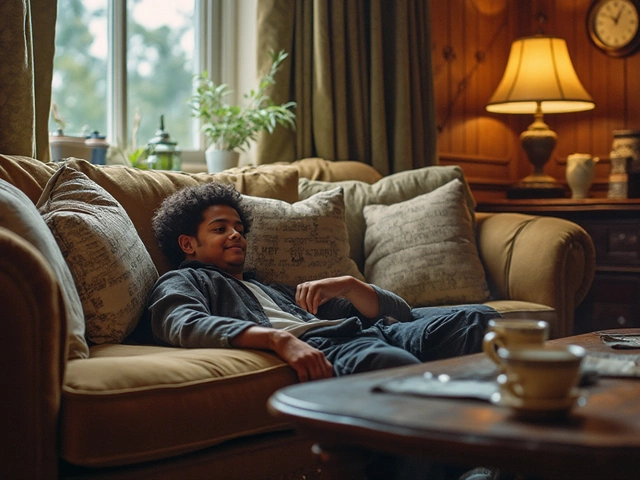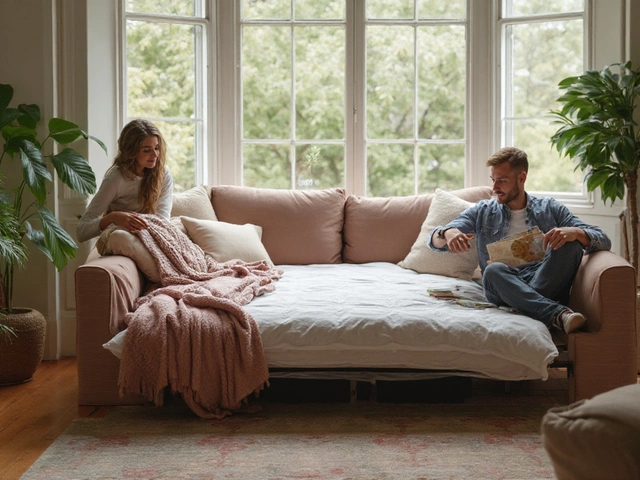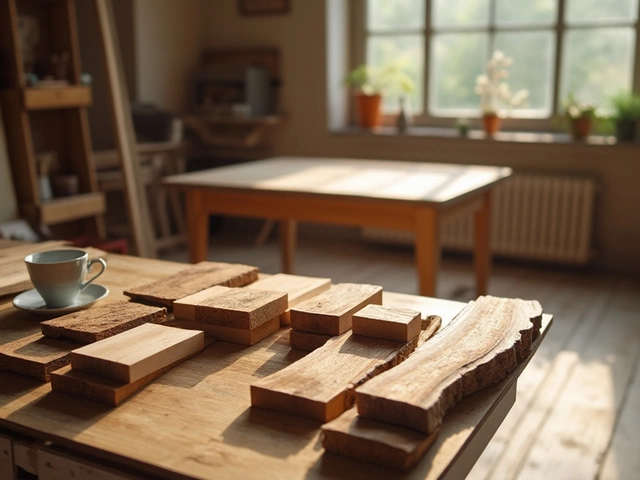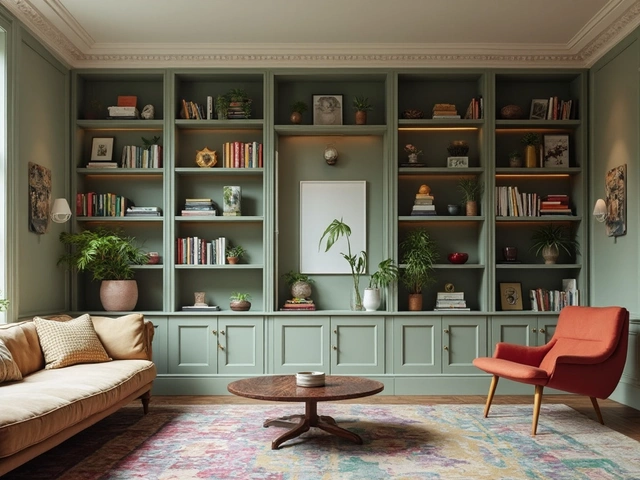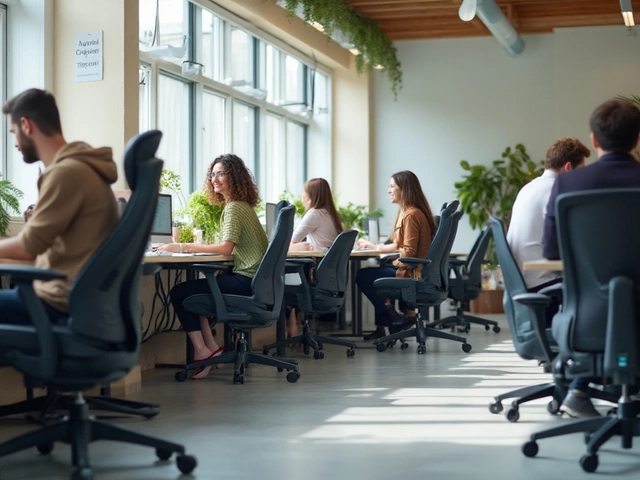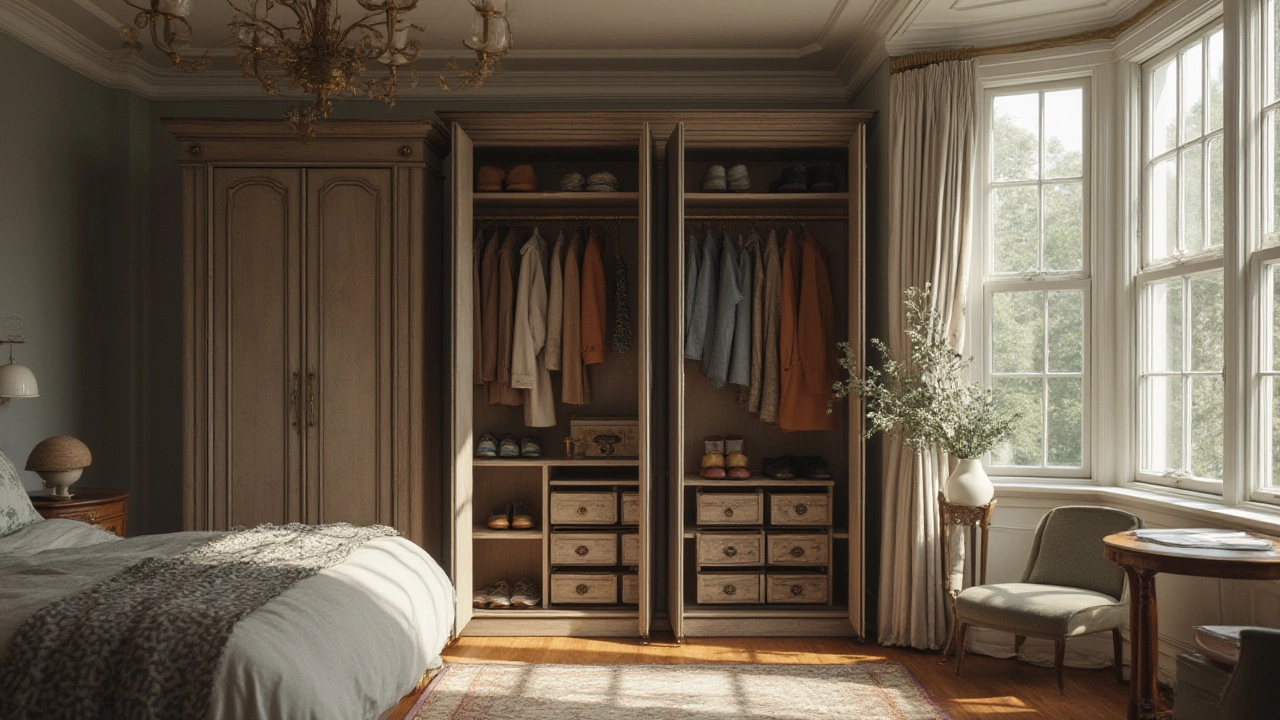 3
Jul,2025
3
Jul,2025
Most folks have a wardrobe at home, but when was the last time you actually stopped and thought about what the word means, or where it came from? There’s a story behind every piece of furniture, even something as seemingly plain as a wardrobe. The humble wardrobe isn’t just a closet for stuffing your jumper and jeans—it's the centerpiece of bedroom storage for millions, from Melbourne's terrace homes to New York apartments. But not all wardrobes are built the same, and there’s a surprising amount of history and detail tucked behind those doors.
What Does 'Wardrobe' Actually Mean?
At its heart, the definition of a wardrobe is simple but deceptively deep. When you ask someone, they might just point to that big piece of furniture in the corner of their bedroom and say, "That's it." But let’s break it down: a wardrobe is a free-standing or built-in piece of furniture designed for storing clothes, shoes, and accessories. It stands on the floor, often against a wall, guarding your favorite shirts, blouses, and that one suit you break out for weddings and interviews.
The Oxford English Dictionary spells it out as "a large, tall cupboard or recess in which clothes may be hung or stored." Clear enough, but why not just call it a cupboard? Here’s where it gets interesting—the word itself comes from the Old French "warderobe," a mash-up of "warder" (to guard) and "robe" (garment), literally meaning "garment guard." In medieval England, the wardrobe was first and foremost a room used by kings and nobles to store clothing and treasure, not just a piece of furniture. In fact, if you leaf through any English history book, you’ll find titles like "Keeper of the Wardrobe"—an actual government office in the twelfth century.
This royal history spills over into modern life in the language we use. Ever wondered why some people here in Australia—or down the road in the UK—use “wardrobe” while Americans prefer “closet”? It’s not just culture, it’s history. The word “closet” originally meant a small private room, and only later did it start to mean a storage space for clothes in North America. Australians, Brits, and much of the Commonwealth have stuck with "wardrobe" for both the free-standing and built-in type.
But let’s not get too caught up in words. The function matters way more than the name: a wardrobe is where you keep the things you wear. These days, that might mean hanging rails, shelves, drawers, and even hidden shoe racks.
Survey numbers in home decorating mags show that almost 85% of Australians prefer having a dedicated wardrobe over using a regular cupboard or dresser. That makes sense—if you’ve got a proper place for your things, you spend less time hunting for missing socks in the morning. Some modern wardrobe systems even come with built-in lights, locks, and high-tech mirrors.
There’s a practical side, too. Ever noticed how the stuff you cram into a wardrobe, stays relatively dust-free? That’s not a coincidence. The doors create a barrier from dust and light, keeping fabrics in better shape compared to open clothes racks.
If you look into any family home survey from the past ten years, folks consistently list "a big, sturdy wardrobe" as a top must-have in a new house or apartment. It’s more than a box for your clothes—it's storage, protection, and a bit of personal style all bundled together. No two wardrobes look the same: some and sleek and white, others massive and mirrored, and plenty more get made to measure for the quirks of older Melbourne homes.
Major Types of Wardrobes
Not all wardrobes are created equal. When you pop into your local furniture outlet or scroll the endless online listings, it’s easy to get overwhelmed. So, let’s break down the most popular types you’ll encounter, and what makes each kind unique.
First up, you’ve got the classic free-standing wardrobe. Picture a tall rectangle with doors (maybe a drawer or two), made to be moved around. This is the no-fuss option: it stands by itself and can follow you from rental to rental, or from your teenage bedroom to your first apartment. They’re a lifesaver for anyone whose place is missing built-in storage, and they come in every style imaginable—oak, pine, mirrored, modern, vintage.
Then, there’s the famous built-in wardrobe. These are either set into a recess in the wall or built right across the room. Builders in Melbourne are all about these, especially in new townhouses. They give you loads of space without stealing floor area, and most have sliding or hinged doors. Pro tip: if you want maximum storage in a small bedroom, ask your builder to run the wardrobe from wall to wall and right up to the ceiling. You’ll thank yourself every time you finally find somewhere for that winter doona.
Walk-in wardrobes are the dream for many—a whole room (maybe just a nook) lined with rods, drawers, and cubbies for everything you own. These are the showpieces you see in movies, the kind that make you think, “This is luxury.” Not everyone has the space—a walk-in needs at least a few spare square meters—but if you do, the organization possibilities are endless. You can lay out tomorrow’s outfit on an island, keep winter clothes out of the way, and still have room for shoe racks.
If space is really at a premium, consider a corner wardrobe. These are specially shaped to fit into the corner of a room where no standard wardrobe can. They make use of awkward floorspace, turning otherwise wasted area into storage gold. Modular wardrobes are another hot trend—think mix-and-match units you can add to, adjust, or reconfigure over time. IKEA probably made these popular worldwide, and they still lead the way for affordable, customizable options.
Let’s not skip the smaller, specialty options: children’s wardrobes (shorter, safer, often with fun designs), linen wardrobes (for towels and sheets), and those weird rotating wardrobes from old movies. Even portable fabric wardrobes with zip-up covers have their fans, especially for renters and students.
| Wardrobe Type | Common Materials | Main Features | Ideal For |
|---|---|---|---|
| Free-standing | Wood, Laminate, Metal | Moveable, Variety of Styles | Renters, Frequent Movers |
| Built-in | Timber, MDF, Plasterboard | Custom Fit, Space-saving | Homeowners, New Builds |
| Walk-in | Mixed (Shelving, Rails) | High Storage, Room-like | Luxury Homes, Fashion Lovers |
| Corner | MDF, Laminates | Fits into Corner, Modular | Small Rooms, Odd Layouts |
| Portable | Fabric, Metal Frame | Lightweight, Temporary | Dorms, Short-term Use |
On top of all this, some wardrobes are designed for single tasks—like just holding shoes or jewelry. Modularity and built-in lighting have become almost a standard for anyone designing a new wardrobe in 2025. If you want next-level organization, some fancy systems even connect to your phone, so you can know exactly what’s inside (think advanced version of those mirror screens you see in tech ads).
"A wardrobe isn’t just about storage—it's about ease, finding what you need instantly," says Darryl Grant, design lead at popular Australian interiors magazine Inside Out.
"A clever wardrobe means fewer frantic mornings and smoother routines. Getting the design right tops the list for happy homeowners."
This is all to say: the wardrobe you choose isn’t just another flatpack purchase. Pick something with a setup that fits your life, your space, and your future moves. Getting it right makes a massive difference, even if you’re squeezing into a rental unit in inner-city Melbourne.
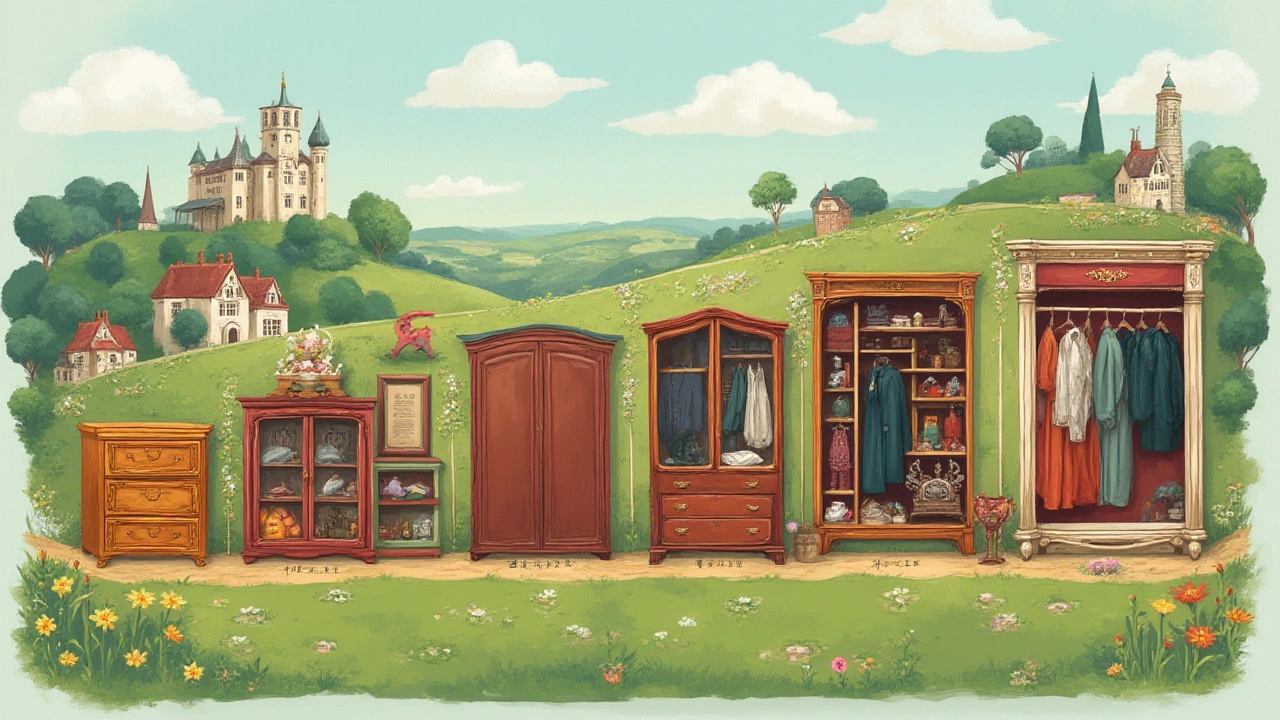
How to Choose and Organize Your Wardrobe
So now you know what a wardrobe is, and what types are floating around out there. But how do you actually choose the right one for your room, and set it up so you don’t lose your cool every morning? There’s a method to the madness, and it starts before you even walk into a store or open your browser for an online shop.
First thing’s first: measure your space. Grab that old tape measure and check the wall where you want your wardrobe to go. Got sloped ceilings? Watch out for height. Power points in the way? Don’t forget them. You need at least half a meter of depth for hanging clothes, more if you want drawers or shoe racks too. If your place has odd nooks (old houses in Collingwood, I’m looking at you), look at custom or modular options that can fit the gap perfectly.
Once you know your space, think about what you actually own. This step’s often skipped, but it’s a lifesaver: empty your old wardrobe and sort your clothes into piles—stuff you actually wear, stuff you keep for sentimental value, and stuff that needs to go. If you’ve got more jumpers than you have hangers, think bigger or add extra rails. Loads of shoes? Prioritize shoe racks or pull-out shelves. Got more ties than shirts? Special tie racks or tiny drawers do the trick.
Next, zero in on the best internal layout for your habits. Open shelves work for people who fold much of their stuff, but become chaos if you’re not a tidy folder. Drawers are ace for T-shirts, socks, and underwear, but useless for long dresses or coats. Hanging rails are key for shirts, dresses, and jackets, but need space below for shoes or baskets. Adjustable shelves let you reconfigure as seasons—and wardrobes—change. If you're sharing with a partner, divvy up space clearly (trust me, arguments over shelf space are a common story!).
If your wardrobe sits in the sun, go for finishes that won’t fade quickly. Glossy white or mirrored doors reflect light and help open up small rooms. Frosted glass gives a modern look and hides clutter behind the doors. If you’re in a rental and need to take your wardrobe with you later, avoid screw-fixed or super-heavy models. For little kids, try soft-close doors and rounded handles—fewer finger smashes that way.
Ready to organize? Here’s a simple checklist to keep things smooth:
- Start with clean, empty space. Wipe out dust so clothes stay fresh.
- Hang the longest items first (coats and dresses at one end), shorter items like pants and skirts next, shirts at the other end.
- Use the bottom for shoes—racks, baskets, or just lined up neatly.
- Drawers or boxes go in the middle or at the bottom for socks, undies, and accessories.
- Stash seasonal stuff in labeled boxes on the highest shelf.
- Add dividers for belts, jewelry, and ties, or just grab some small baskets.
- Add a bit of cedar wood or a sachet for keeping moths away (nobody wants holes in their wool jumpers).
- Keep a small foldable step-stool near if your top shelves are a stretch.
Studies from interior design websites show that people feel more relaxed when their bedroom isn’t cluttered by random piles of clothes. It’s not about perfection, just about finding what you need when you need it. Label boxes, keep hangers uniform (tidy wardrobes look bigger), and take five minutes each month to weed out things you never wear.
If you live with others, get everyone on board with a shared routine. Tidying together once a month keeps arguments about missing jumpers to a minimum. For the ultra-organized, try using color-coded hangers or sections per outfit type. That way, you’re not holding up everyone in the morning or running late for school drop-off.
Remember, your wardrobe isn’t just about function—it’s about your habits, your style, and saving your sanity in the rush before work or a night out.
Wardrobes in Pop Culture and Future Trends
You might not realize it, but wardrobes have their own spot in pop culture. The most famous of all: C.S. Lewis’s magical wardrobe from "The Lion, The Witch and The Wardrobe," which whisked the Pevensie kids off to Narnia. That wooden wardrobe wasn’t just a piece of furniture—it became a portal, an adventure starter. People still talk about that story 75 years after it first hit shelves. In fact, when BBC surveyed British readers about their most iconic pieces of furniture, the ‘Narnia wardrobe’ made the top five.
Wardrobes also pop up in home makeover shows and interior design Instagram feeds like you wouldn’t believe. Maybe you remember those old-fashioned wardrobes in your grandparents’ house—the ones with heavy wooden doors and a certain musty smell. Or maybe you’re chasing the sleek, minimalist built-ins from Pinterest, covered in an endless row of white doors that hide chaos within.
Film buffs might spot wardrobes as plot devices—a hiding place, a romantic getaway, even a time machine (Marty McFly’s shocking reveal in "Back to the Future"). They’re as much about mystery and secrets as they are about keeping shirts unwrinkled.
But what about the future? Wardrobe design keeps evolving. In 2025, smart tech is creeping in big time. Picture wardrobes with built-in LED lighting activated by motion sensors (no more fumbling around in the dark), Bluetooth speakers tucked into the doors, even sensors that track humidity to keep mold away. High-end brands like Poliform and Häfele Australia are already pioneering smart wardrobe tech for luxury homes, and the rest of the market is catching up quickly.
Sustainability is a hot trend, too. More companies are making wardrobes from recycled materials or reclaimed timber (not just for the eco-cred, but because it looks stunning). A 2024 study by the Australian Furniture Association found that 63% of buyers under 40 now look for sustainable options—wardrobes included—compared to just 19% ten years ago. That’s a huge leap, and the big-name brands are taking notice.
Customisation is also skyrocketing. Maybe you want a hidden ironing board, a pull-out laundry basket, or secret jewelry compartments. These aren’t just bells and whistles—they make life smoother. Modular units mean you can shrink or expand your set-up if you move, and plenty of Aussie start-ups now offer online design tools so you can literally build your dream wardrobe in 3D before buying.
Even the term "wardrobe" is spreading online. Thanks to fashion influencers and stylist reality shows, "wardrobe" now means your entire clothing collection, not just the furniture it sits in. Search “wardrobe update” or “wardrobe refresh” on YouTube and get ready for hours of styling advice—proof that language, just like furniture, is always changing shape.
No matter what the future throws at us—tiny apartments, fashion crazes, or tech that talks to your phone—the wardrobe isn’t going anywhere. It’s more than a box with doors. It's your own guard for everything that makes you, well, you. Good storage never goes out of fashion.
